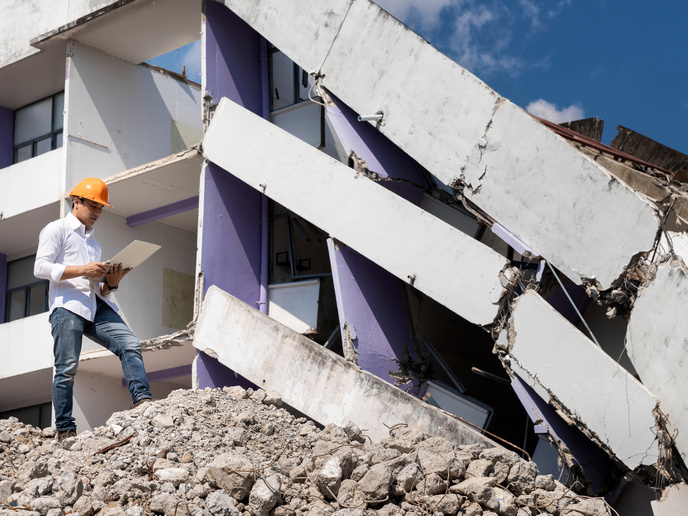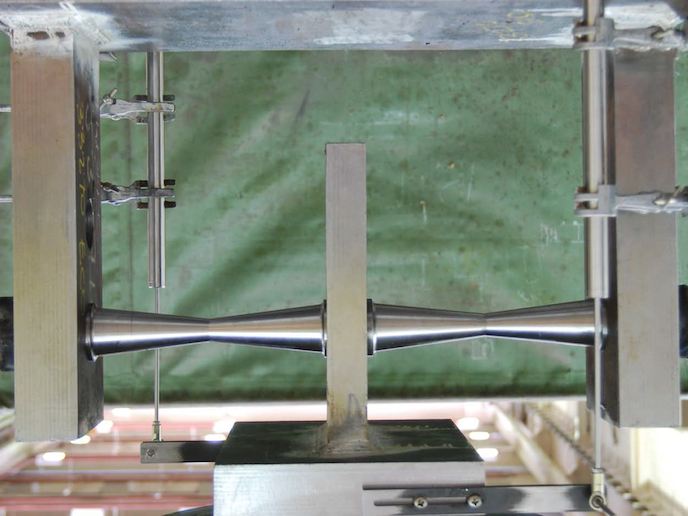Protecting buildings, power plants and bridges with metamaterials
We know that earthquakes, caused by disturbances that occur far below the ground due to the movement of tectonic plates, can wreak havoc on the surface. But ground-borne vibrations can also be caused by other sources, including passing cars and trains as well as construction and mining operations. “Depending on the intensity, resonating features and proximity of the source, all these vibrations can have significant impacts on the built environment,” says INSPIRE(opens in new window) project coordinator Marianna Loli from Grid Engineers(opens in new window) in Greece. “These impacts can range from noise disturbance to life-threatening collapses of buildings and infrastructure, with far-reaching consequences for society and the economy.”
Innovative solutions using metamaterials
The main objective of the INSPIRE project, which was coordinated by the National Technical University of Athens(opens in new window) in Greece and supported by the Marie Skłodowska-Curie Actions(opens in new window) programme, was to design innovative solutions to better protect the built environment from hazardous ground vibrations. These solutions were developed using metamaterials(opens in new window). “Metamaterials are engineered materials that do not exist in nature but can be manufactured to demonstrate exceptional properties,” explains Loli. “This might include the ability to redirect seismic waves to mitigate structural shaking.” The project built on a growing body of scientific evidence that suggests that metamaterials have the potential to enhance the resilience of buildings, bridges and other critical infrastructure during earthquakes. They might also provide superior noise isolation capabilities, thus improving urban living conditions.
Making use of cutting-edge technologies
New concepts were developed through a pioneering training programme that brought together eight European universities and 11 industry leaders. A total of 15 doctoral researchers were then selected through a highly competitive process, from over 100 candidates from around the world. “Through their 3-year-long PhD programmes, the researchers investigated a wide range of anti-vibration metamaterial concepts,” notes Loli. “These included below-ground constructions to act as shields with dispersive, filtering and waveguiding properties, novel damping devices and passive vibration absorbers, and engineered gravel materials that can protect pipelines.” Other innovations investigated included vibration-control devices customised to optimise the seismic response of bridges, and rail-engineering solutions for controlling train-induced vibration to minimise noise in urban areas. Another researcher looked into acoustic surfaces and dynamic vibration absorbers, tailored for low-frequency sound isolation. In developing their ideas, the researchers made use of cutting-edge technologies such as 3D printing, as well as advanced numerical simulations facilitated by supercomputers. These technologies were employed to optimise designs and demonstrate the effectiveness of the proposed solutions.
Safety and liveability of the built environment
The INSPIRE project successfully showed how metamaterials can be used to enhance the safety and liveability of the built environment. “The feasibility of the proposed designs was demonstrated through advanced analytical simulations and small-scale experimental campaigns,” remarks Loli. The project has also delivered a diverse toolkit(opens in new window) of algorithms, numerical methods and processing tools, which can be used by researchers involved in similar projects in the future. Next steps towards market uptake of the solutions include large-scale pilot testing and further optimisation of designs. “End users could be the seismic isolation market, companies that promote R&D in the field of structural protection, public sector departments and construction companies,” says Loli. “We think that INSPIRE’s results can also contribute to improving professional guidelines for seismic design.”





